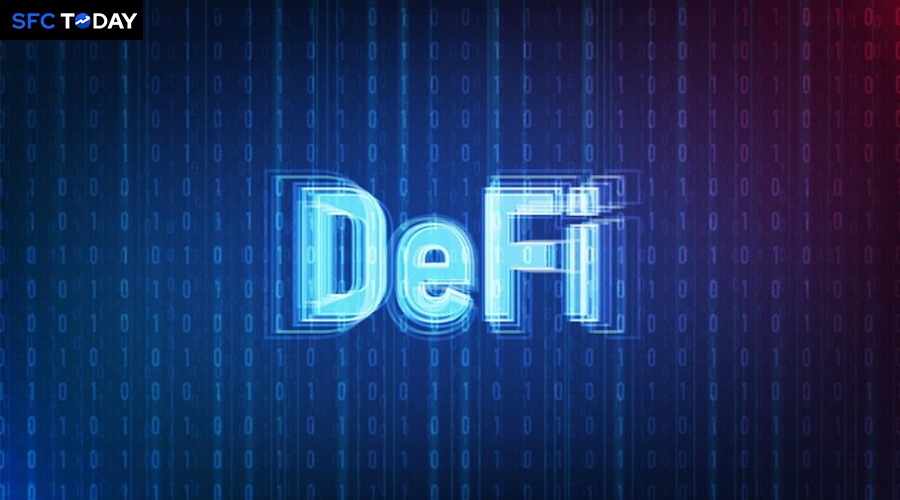Unraveling DeFi lending: Understanding how it works and why it matters
Decentralized Finance (DeFi) has emerged as a revolutionary sector within the cryptocurrency and blockchain space. It offers a variety of financial services without the need for traditional intermediaries like banks.
Among the many DeFi services, lending stands out as one of the most popular and impactful. This article explores the fundamentals of DeFi lending, its operational mechanisms, and its significance in the broader financial ecosystem.
What is DeFi Lending?
DeFi lending refers to the practice of providing and receiving loans through decentralized platforms built on blockchain technology.
Unlike traditional lending, which relies on financial institutions to facilitate transactions, DeFi lending operates via intelligent contracts—self-executing contracts with the terms directly written into code.
These platforms allow users to lend their assets to earn interest or borrow assets by providing collateral, all without the need for a middleman.
How DeFi Lending Works
1.Smart Contracts: At the core of DeFi lending are smart contracts, which automate the lending and borrowing processes. When a user wants to lend or borrow, they interact with these contracts, which handle the transaction transparently and autonomously.
2.Collateralization: Borrowers must typically provide collateral in the form of cryptocurrency to secure a loan. This collateral is locked in a smart contract and returned when the loan is repaid. Overcollateralization is expected, meaning the collateral value exceeds the loan amount to mitigate the risk of default.
3.Liquidity Pools: DeFi lending platforms often use liquidity pools, where multiple lenders contribute their assets. Borrowers draw from these pools, and interest is distributed among the lenders. This pooling mechanism ensures there are always enough funds available for lending.
4.Interest Rates: Interest rates in DeFi lending are usually algorithmically determined based on supply and demand dynamics. Higher demand for loans can drive up interest rates, providing more attractive returns for lenders.
5.Governance: Many DeFi platforms are governed by their communities through decentralized autonomous organizations (DAOs). Token holders can propose and vote on changes to the platform, such as modifying interest rates or updating protocols.
Key DeFi Lending Platforms
Aave: Known for its diverse range of supported assets and unique features like flash loans and interest rate switching.
Compound: A pioneer in the DeFi lending space, offering an easy-to-use interface and a wide variety of lending and borrowing options.
MakerDAO: Allows users to lock in Ethereum as collateral to generate the stablecoin DAI, providing a stable lending and borrowing environment.
Why DeFi Lending Matters
1.Accessibility: DeFi lending opens up financial services to anyone with an internet connection, eliminating the need for a bank account or credit history. This inclusivity is particularly beneficial for individuals in underbanked regions.
2.Transparency: Blockchain technology ensures that all transactions are transparent and can be audited by anyone. This transparency reduces the risk of fraud and enhances trust among users.
3.Efficiency: DeFi lending platforms operate 24/7 without the constraints of traditional banking hours. Smart contracts automate the processes, reducing the time and cost associated with manual intervention.
4.Innovation: DeFi lending has introduced innovative financial products and services, such as flash loans, which allow for uncollateralized loans that must be repaid within a single transaction block. This fosters a new wave of financial creativity.
5.Yield Opportunities: For lenders, DeFi provides opportunities to earn higher yields compared to traditional savings accounts. This is particularly attractive in a low-interest-rate environment.
6.Decentralization: By removing intermediaries, DeFi lending reduces the concentration of financial power and the risk of single points of failure. This decentralized approach promotes a more resilient and fair economic system.
Risks and Challenges
While DeFi lending offers numerous advantages, it also comes with risks and challenges:
Smart Contract Vulnerabilities: Bugs or vulnerabilities in smart contracts can lead to significant financial losses. Audits and rigorous testing are crucial to mitigate these risks.
Market Volatility: The value of collateral can fluctuate wildly, potentially leading to liquidation if the collateral value falls below a certain threshold.
Regulatory Uncertainty: The evolving regulatory landscape for DeFi poses potential risks. Regulatory crackdowns could impact the operation and accessibility of DeFi platforms.
User Error: The self-custody nature of DeFi requires users to manage their private keys securely. Loss or theft of private keys can result in the irreversible loss of funds.
Conclusion
DeFi lending represents a significant leap forward in the democratization of financial services, leveraging blockchain technology to create an open, transparent, and efficient system.
While it offers substantial benefits, it also requires careful consideration of the associated risks. As the DeFi ecosystem continues to mature, it holds the potential to reshape the financial landscape, making it more inclusive and innovative.
For those willing to navigate its complexities, DeFi lending provides a glimpse into the future of finance.







